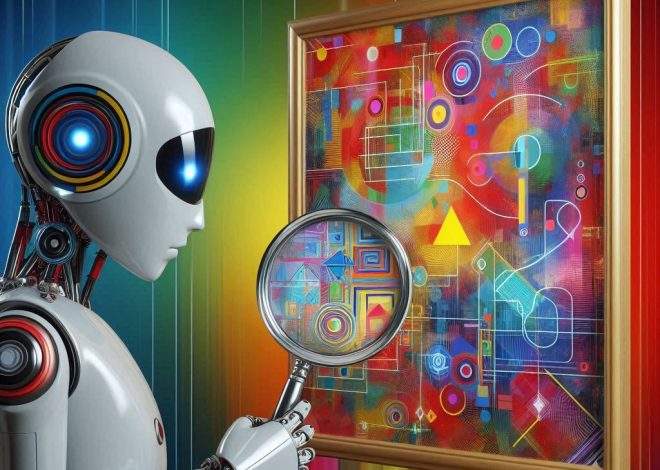Transforming Businesses with AI Face Recognition — A Comprehensive Guide
Introduction
Imagine a world where your face is your key, your password, and your ticket to a more personalized experience. This isn’t science fiction, it’s the reality of AI face recognition technology.
As artificial intelligence (AI) continues to reshape our world, face recognition has become a game-changer across industries.
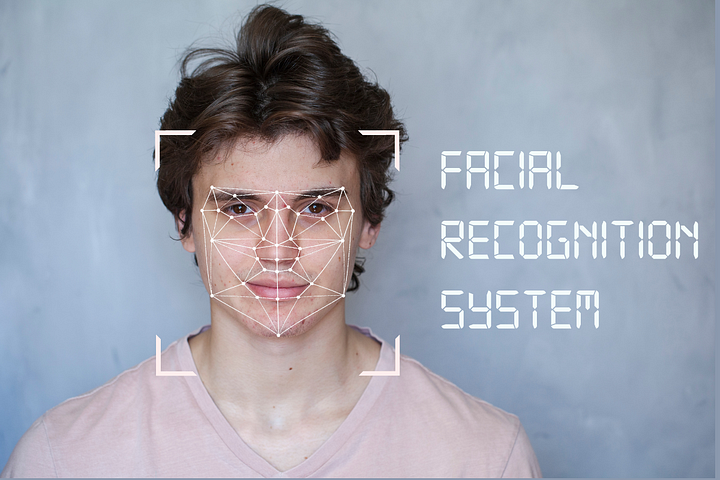
In this article, we’ll delve into the fascinating world of face recognition, exploring how AI is making it work for businesses and what it means for the future.
We’ll uncover the different applications, from security and access control to personalized marketing and beyond. So, buckle up and get ready to see the future through the lens of AI-powered facial recognition!
Understanding AI Face Recognition
At its core, AI face recognition is a sophisticated technology that enables machines to identify or verify individuals based on their facial features.

Leveraging complex algorithms and neural networks, AI face recognition systems analyze facial patterns, such as the distance between the eyes, the shape of the nose, and the contours of the face, to create unique biometric signatures.
These signatures are then compared against a database of known faces to determine a match.
Applications of Face Recognition
There are several types of AI face recognition applications, each tailored to specific use cases:
1. Verification
Here, AI face recognition refers to a straightforward process of comparing two images to determine if they depict the same person.
It’s akin to answering the question, “Is this the same person?”. This technology is increasingly utilized in various verification scenarios:
Financial Transactions:
AI face recognition is gaining traction in the financial sector for authenticating online transactions.
By integrating AI face recognition into mobile banking apps or e-commerce platforms, financial institutions can enhance security and prevent unauthorized access to sensitive financial data.
Healthcare:
In healthcare settings, AI facial recognition can be employed to verify patients’ identities during check-in processes or medication dispensing.
By linking facial biometrics to electronic health records, healthcare providers can ensure accurate patient identification and streamline administrative workflows.
Hospitality:
Hotels and resorts can leverage AI face recognition technology to enhance guest experiences and improve security.
From expedited check-in processes to personalized concierge services, AI face recognition enables hospitality establishments to deliver tailored services while maintaining a safe and secure environment for guests.
Ridesharing Services:
AI face recognition can be utilized by ridesharing apps to authenticate and identify drivers, ensuring they are the authorized individuals assigned to the ride.
This enhances passenger safety and trust by verifying that the driver matches the registered profile before the trip begins.
Voting System:
In the context of voting systems, AI face recognition technology can authenticate registered voters and streamline the voting process.
By analyzing voters’ facial features and biometric data, electoral authorities can ensure the accuracy and integrity of the voting process, preventing fraudulent activities such as double voting or impersonation.
Additionally, AI face recognition enables voters to conveniently and securely cast their votes without the need for physical identification documents, enhancing accessibility and efficiency in electoral procedures.
2. Identification
Unlike verification, identification involves determining the identity of an individual from a database of faces.
This answers the question, “Who is this person most likely to be?”. This is most useful when you are sure the person in the image is registered in your database.
AI face recognition technology is revolutionizing identification processes across various industries:
Education:
Educational institutions are adopting AI face recognition for purposes such as student attendance tracking, campus security, and access control.
By replacing traditional attendance-taking methods with automated AI face recognition systems, schools and universities can improve efficiency and accountability while ensuring the safety of students and staff.
Events Management:
Event organizers are turning to AI face recognition technology to manage large-scale gatherings more effectively.
By deploying AI face recognition systems at entry points, event venues can streamline admission processes, enhance security, and track attendance in real-time, thereby optimizing event operations and ensuring a seamless experience for attendees.
3. Investigation
In forensic investigations, AI face recognition technology is invaluable for analyzing digital evidence and identifying individuals involved in criminal activities.
Cybersecurity:
In the digital realm, AI face recognition is used to investigate cybercrimes and identify perpetrators based on digital footprints, social media posts, and online interactions.
By analyzing facial features and matching them to online profiles, cybersecurity experts can track down cybercriminals and prevent future attacks.
Human Rights Advocacy:
Human rights organizations leverage AI face recognition technology to document human rights abuses and hold perpetrators accountable.
By analyzing photos and videos captured in conflict zones or during protests, activists can identify victims and perpetrators, gather evidence, and advocate for justice and accountability on a global scale.
Disaster Response:
In disaster response scenarios, AI face recognition technology is employed to locate missing persons and reunite families separated during natural disasters or humanitarian crises.
By analyzing photos and surveillance footage, emergency responders can identify individuals in distress and coordinate rescue efforts more effectively, ultimately saving lives and mitigating human suffering.
In evaluating the effectiveness of AI face recognition algorithms, metrics such as accuracy, speed, and scalability are paramount.
These metrics ensure that the technology performs reliably in real-world scenarios, regardless of factors such as lighting conditions, facial expressions, or occlusions.
Factors Influencing Face Recognition Results
Several factors can impact the results of AI face recognition systems, affecting their accuracy, reliability, and overall performance.
Understanding these factors is crucial for optimizing facial recognition deployments and mitigating potential challenges. Here are some key factors that can influence facial recognition results:
Quality of Input Data:
- Image Resolution: Higher resolution images generally lead to more accurate recognition results as they contain more detailed facial information.
- Image Quality: Factors such as lighting conditions, image blur, noise, and occlusions (e.g., hats, and glasses) can degrade the quality of input images, affecting facial recognition accuracy.
- Pose and Angle: Variations in pose (head orientation) and angle of the face relative to the camera can impact facial recognition performance, especially if the system is not trained to handle such variations.
- Expression and Emotion: Facial expressions and emotional states (e.g., smiling, frowning) can alter facial features, potentially affecting facial recognition accuracy, particularly if the system is trained on limited-expression variations.
Diversity and Representativeness of Training Data:
- Demographic Diversity: Facial recognition algorithms trained on diverse datasets are better equipped to recognize faces from different demographics, including age, gender, ethnicity, and cultural backgrounds.
- Bias in Training Data: Biases present in training data, such as underrepresentation of certain demographics, can lead to biased facial recognition results, disproportionately affecting specific groups and reducing algorithmic fairness.
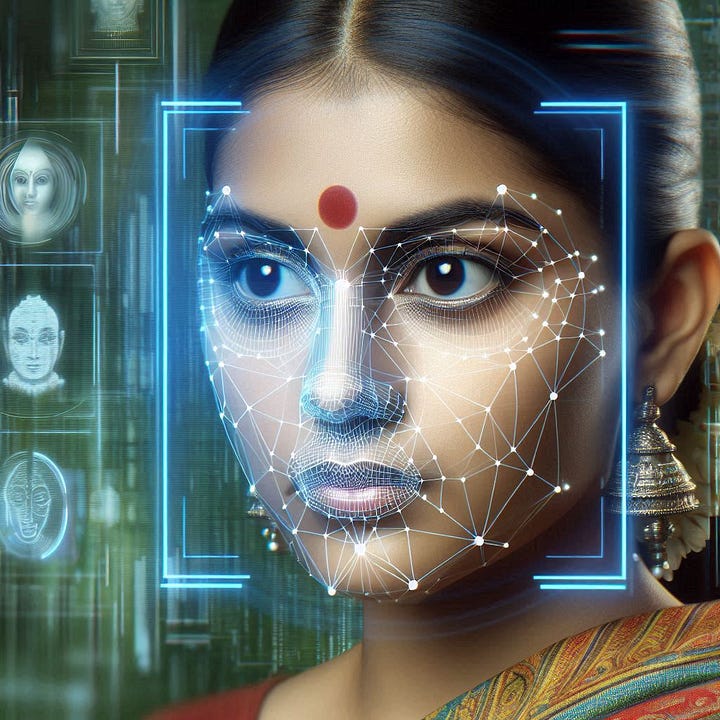
Algorithmic Design and Configuration:
- Feature Extraction Techniques: The choice of feature extraction techniques can significantly impact facial recognition performance, with more advanced techniques often yield better results.
- Matching Algorithms: Different matching algorithms may be more suitable for specific facial recognition tasks and datasets, influencing recognition accuracy and computational efficiency.
- Threshold Settings: Thresholds for similarity scores or confidence levels play a crucial role in determining when a match is considered valid, affecting the balance between false positives and false negatives in facial recognition outcomes.
Environmental Conditions:
- Lighting Conditions: Variations in lighting, including shadows, reflections, and changes in ambient light, can affect facial appearance and visibility, impacting facial recognition accuracy.
- Environmental Noise: Background noise, distractions, and environmental factors (e.g., weather conditions in outdoor settings) can interfere with facial recognition systems, reducing their ability to detect and recognize faces accurately.
Deployment Context and Use Case:
- Task Complexity: The complexity of the facial recognition task and the specific use case (e.g., security surveillance, access control, retail analytics) can influence the suitability of facial recognition algorithms and affect performance outcomes.
- Data Privacy and Security: Compliance with data privacy regulations, data security measures, and ethical considerations (e.g., user consent, data anonymization) can impact facial recognition deployment strategies and influence user acceptance and trust.
Adversarial Attacks and Spoofing:
- Adversarial Attacks: Malicious actors may attempt to deceive facial recognition systems by manipulating input data or exploiting vulnerabilities in the algorithm, leading to erroneous recognition results.
- Spoofing: Techniques such as using printed photos, masks, or deepfakes to impersonate legitimate users can undermine facial recognition security and reliability, necessitating the implementation of robust anti-spoofing measures.
Human Factors:
- User Cooperation: User cooperation and compliance with facial recognition system requirements (e.g., proper positioning, facing the camera, removing obstructions) can influence the quality of input data and affect recognition accuracy.
- User Expectations: User expectations, perceptions, and acceptance of facial recognition technology can impact their willingness to participate in facial recognition-enabled processes and influence system usability and effectiveness.
By considering these factors and implementing appropriate measures to address them, organizations can optimize the performance of their AI face recognition systems, enhance security, and deliver superior user experiences.
Use Cases of AI Face Recognition
The versatility of AI face recognition technology has led to its widespread adoption across various industries, with applications ranging from security and surveillance to personalized user experiences:
Security and Surveillance
AI face recognition is a cornerstone of modern security and surveillance systems, enabling organizations to monitor public spaces, secure facilities, and prevent unauthorized access.
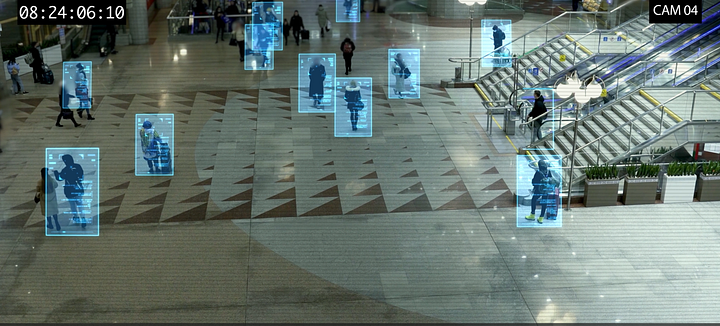
AI face recognition is deployed to enhance safety and deter criminal activity, from airports to train stations to shopping malls and corporate offices.
Law Enforcement:
Law enforcement agencies utilize AI face recognition to identify suspects and enhance public safety.
By analyzing surveillance footage and matching faces against criminal databases, law enforcement officers can quickly identify individuals of interest and apprehend suspects.
Border Control:
AI face recognition plays a crucial role in border control and immigration processes. At border crossings and international airports, facial biometrics are used to verify travelers’ identities and enhance security measures.
By automating identity verification processes, border control authorities can expedite immigration procedures while maintaining strict security protocols.
Retail Loss Prevention:
Retailers leverage AI face recognition technology to prevent theft and reduce losses.
By monitoring store entrances and analyzing customer behavior, retailers can identify potential shoplifters and alert security personnel in real-time, minimizing losses and improving store profitability.
Authentication and Access Control
In the realm of authentication and access control, AI face recognition offers a seamless and secure alternative to traditional methods such as passwords or PINs.
Whether unlocking smartphones, accessing bank accounts, or entering secure facilities, individuals can verify their identity with a simple glance.
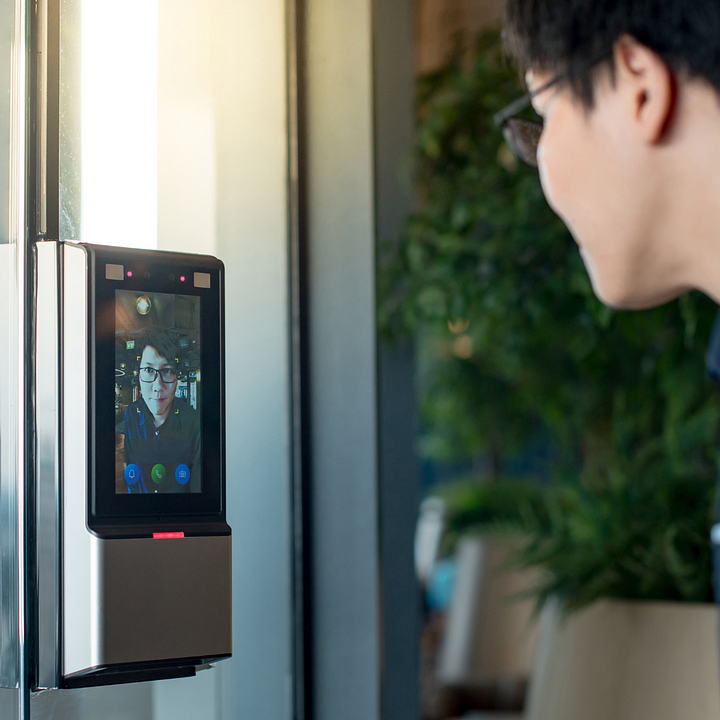
Vehicle Access:
AI face recognition technology is integrated into vehicle access systems to enhance security and convenience.
From unlocking vehicles and starting engines to accessing parking facilities, drivers can authenticate their identity using facial biometrics, eliminating the need for physical keys or access cards.
Visitor Management:
AI face recognition is used in visitor management systems to streamline entry processes and enhance security in corporate environments.
By capturing and verifying visitors’ identities upon arrival, organizations can track visitor movements, restrict access to sensitive areas, and ensure compliance with security protocols.
Biometric Identification
AI face recognition is revolutionizing identity verification processes in industries such as travel, banking, and healthcare.
Passport and ID verification at border crossings, biometric authentication in mobile banking apps, and patient identification in healthcare facilities are just a few examples of how AI face recognition streamlines operations and enhances security.

Employee Time and Attendance:
Businesses use AI face recognition technology to track employee attendance and manage work hours accurately.
Organizations can automate timekeeping processes, prevent buddy punching, and ensure payroll accuracy by deploying facial recognition systems at workplace entrances or time clock terminals.
Age Verification:
AI face recognition technology is utilized for age verification purposes in industries such as retail, hospitality, and entertainment.
By analyzing facial features and matching them against age estimation models, businesses can verify customers’ ages for age-restricted purchases, entry to age-restricted venues, or participation in age-specific activities.
Personalization
Businesses are leveraging AI face recognition to deliver personalized user experiences across various platforms.
From customized product recommendations in e-commerce to automatic photo organization and tagging in social media, AI face recognition enables businesses to tailor their offerings to individual preferences and behaviors.
Marketing and Advertising:
Marketers utilize AI face recognition technology to analyze customer demographics and behavior for targeted advertising campaigns.
By capturing and analyzing facial expressions, emotions, and engagement levels, marketers can deliver personalized advertisements that resonate with individual consumers, driving higher conversion rates and customer satisfaction.
Interactive Experiences:
Entertainment venues and theme parks integrate AI face recognition technology into interactive experiences to enhance visitor engagement and enjoyment.
From personalized greetings and immersive attractions to interactive photo booths and augmented reality games, AI face recognition enables venues to create memorable experiences that captivate audiences and drive repeat visits.
Challenges and Ethical Considerations
While the benefits of AI face recognition are undeniable, its widespread adoption also raises certain challenges and ethical considerations that must be addressed:
Privacy Concerns
The collection and storage of facial data raise significant privacy concerns, particularly in the context of surveillance and data breaches.
Striking a balance between security and privacy is essential to ensure that an individual’s rights are respected and protected.
Data Requirements
Training accurate AI face recognition models require vast amounts of data, raising questions about data collection, storage, and consent.
Organizations must adhere to strict data protection regulations and obtain explicit consent from individuals before using their facial data for training purposes.
Bias and Accuracy
AI face recognition systems may exhibit biases or inaccuracies, particularly when dealing with diverse demographics or under challenging conditions such as varying lighting or facial expressions.
Addressing these biases and ensuring algorithmic fairness is essential to prevent discrimination and promote inclusivity.
Legal and Regulatory Challenges
The use of AI face recognition is subject to legal and regulatory frameworks, which vary significantly across jurisdictions.
Organizations must navigate complex regulations governing data protection, surveillance, and individual rights to ensure compliance and mitigate legal risks.
Liveliness Detection
Ensuring the integrity of AI face recognition systems requires robust liveliness detection mechanisms to differentiate between live subjects and spoofing attempts.
Techniques such as 3D depth sensing, infrared imaging, and behavioral analysis can help enhance security and prevent fraudulent activities.
Conclusion
In conclusion, AI face recognition technology represents a paradigm shift in how businesses harness the power of artificial intelligence to enhance security, improve efficiency, and deliver personalized experiences.
By understanding its underlying principles, exploring diverse applications, and addressing ethical considerations, organizations can unlock the full potential of AI face recognition to drive innovation and growth in the digital age.
FAQs
1. Can AI face recognition be fooled?
While AI face recognition is becoming more sophisticated, spoofing attempts using techniques like high-quality photos or masks are still a concern.
2. How does AI face recognition compare to other biometric technologies?
Facial recognition offers advantages like non-intrusiveness and the ability to function from a distance.
However, other biometric technologies like fingerprint scanners may be suitable for specific applications depending on security requirements and user preferences.
3. Will AI face recognition replace passwords?
AI face recognition offers a secure and convenient alternative to passwords, but it may not completely replace them in all scenarios.
Two-factor authentication combining facial recognition with another verification method might be optimal for enhanced security.
